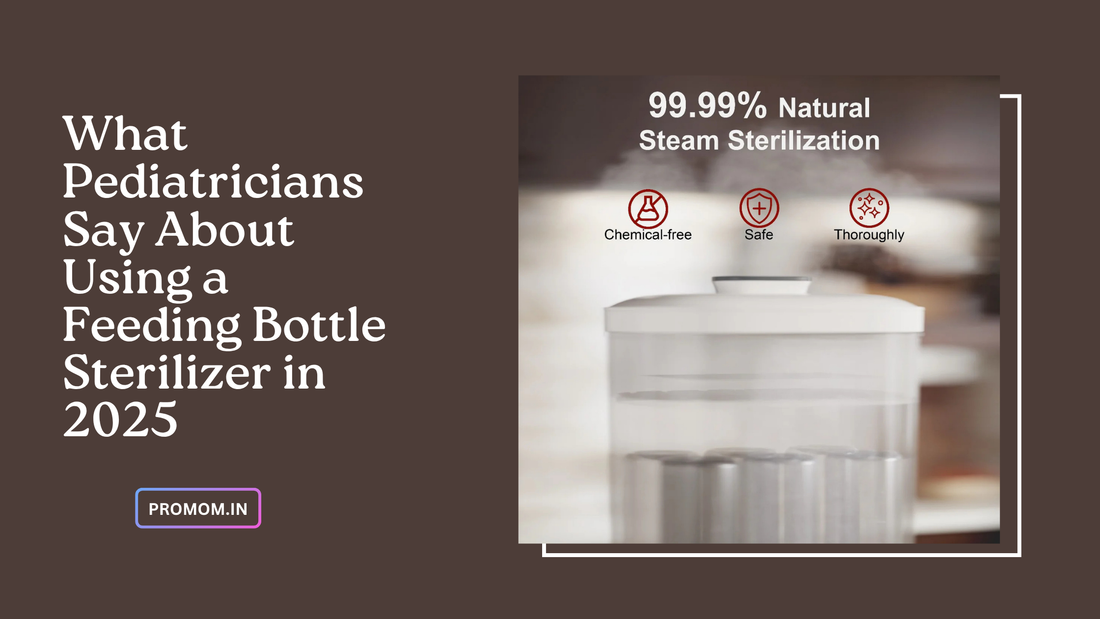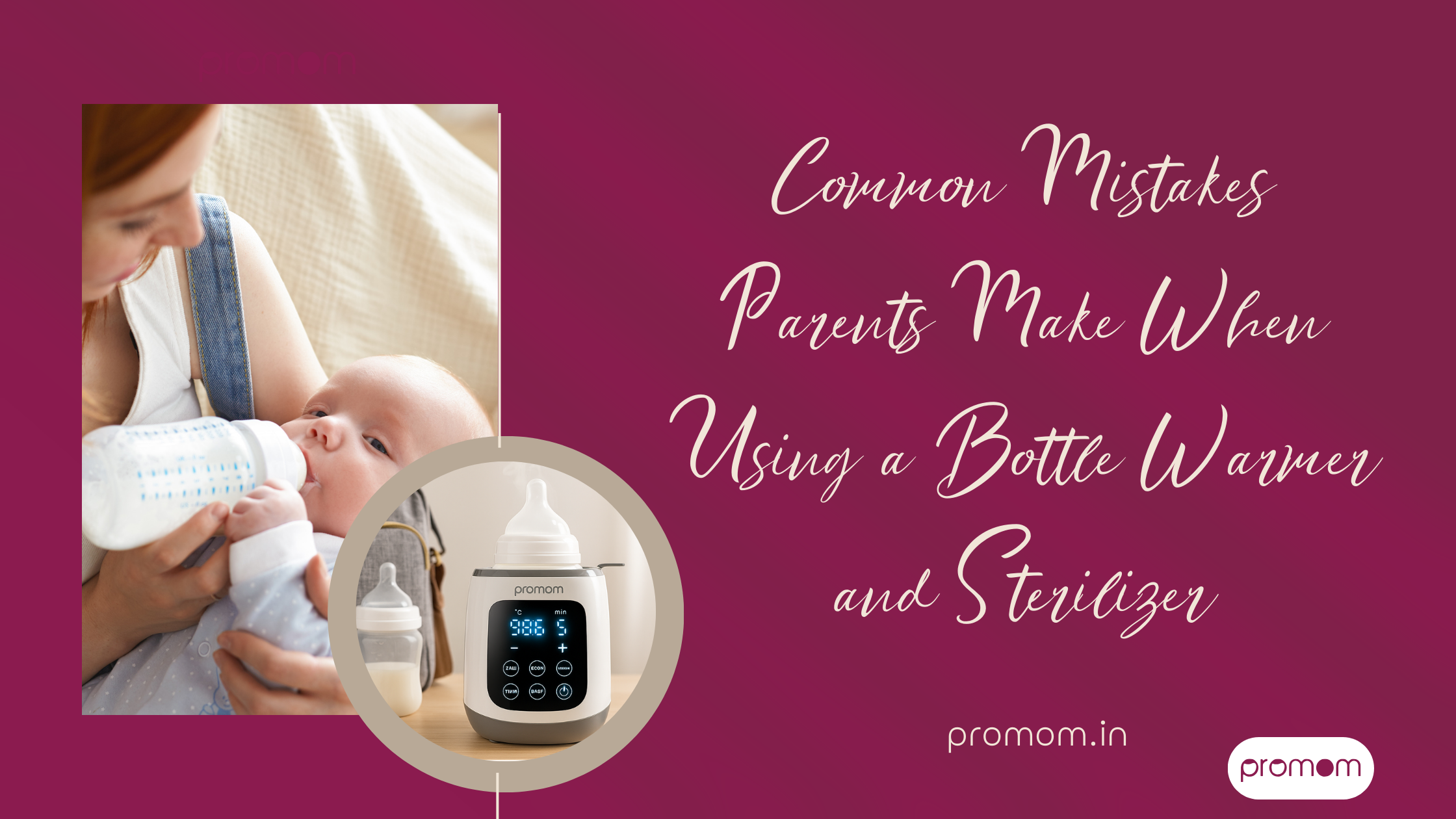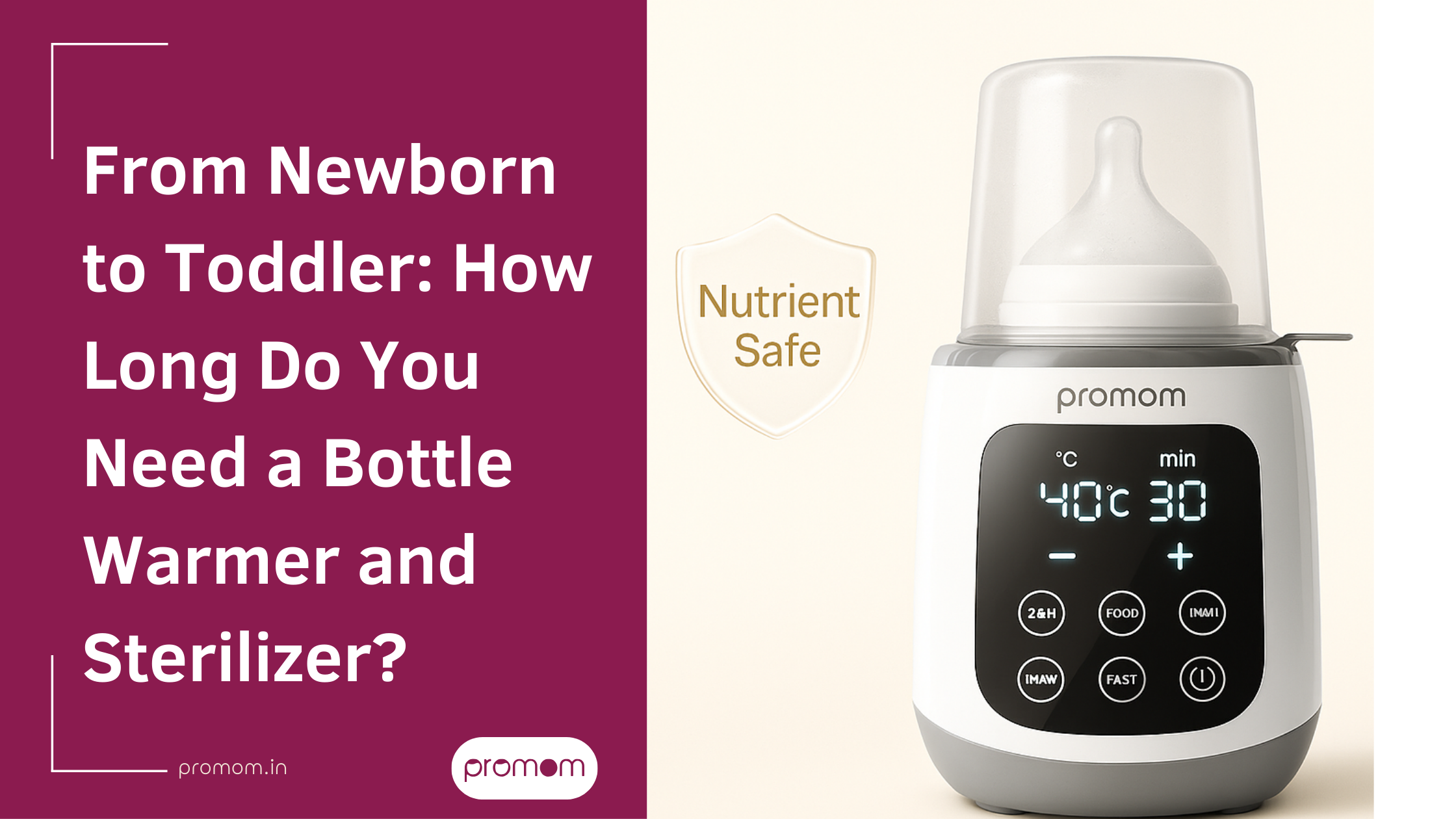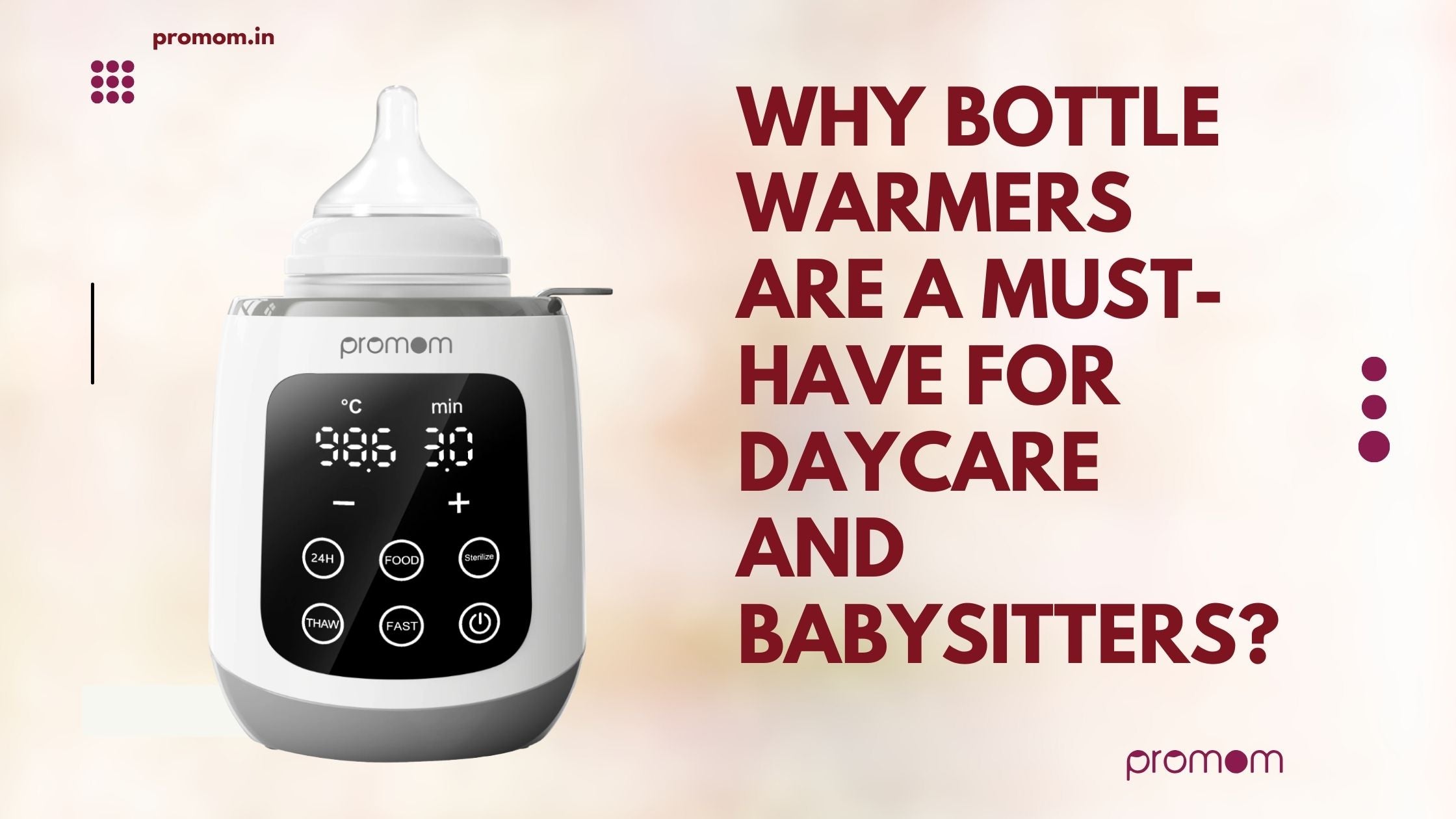
What Pediatricians Say About Using a Feeding Bottle Sterilizer in 2025
Being a new parent, one of your first priorities is to make sure that the feeding equipment of your baby is safe and clean. In 2025, feeding bottle sterilizers will continue being a vital piece of equipment in the home.
It minimizes the chances of infections due to terrible bacteria and germs. So what do pediatricians exactly think about feeding bottle sterilizers? What happens to all the rest of the essential baby care products, such as breast pumps?
In this blog we are going to see the pediatric standards today, why to use bottle sterilization, and how a sterilized breast pump can support and ensure good hygiene for your baby.
The Importance of Sterilizing Baby Feeding Equipment
Babies possess sensitive immune systems, and they are open to infections caused by bacteria in feeding bottles and breast pump components. Although cleaning off with soap and water cleans off the dirt and the remains of milk, sterilization destroys any germs that cleaning alone may not kill.
Pediatricians underscore the importance of sterilizing feeding bottles and parts of the breast pumps in the prevention of diseases such as diarrhea, respiratory infections, and other common childhood diseases.
Pediatricians’ Views on Feeding Bottle Sterilizers in 2025
1. High-risk infants require sterilization.
The CDC and American Academy of Pediatrics (AAP) advise daily sterilization of feeding bottles for children under 2 months or children born prematurely or with immunologic deficits. When boiling water is effective, specialists still insist that pediatricians should use specialized sterilizers, which are convenient and safe.
2. Washing Is Often Enough Later on.
In clean-water settings, healthy full-term infants older than 3.6 months of age typically do not need regular hot, soapy water washings (or a dishwasher with a sanitized cycle); daily washing is likely appropriate. According to one of the AAP spokesmen, “Babies do not live in a sterile environment, and regular washing is much more significant than regular bottle sterilizing.”
3. Convenience and Added Protection in Certain Families
Newer steam sterilizers and other forms, such as UV, are hailed to be fast at cleaning bottles, plastic nipples, and pacifiers, even breast shields, and most of them have built-in drying cycles that can help prevent mold from growing and are often done in 10 minutes or less. They assist parents in keeping the hygiene consistent regardless of the tight schedules.
Pediatricians Safe Feeding Tips in 2025
-
When dealing with bottles, breast pumps, and baby feeding machinery, never forget to wash your hands.
-
Clean all feeding devices regularly, including during times of your illness or when your baby is infected with signs of infection.
-
Keep store-sterilized items in a clean-covered container to prevent bacterial growth until needed.
-
Change bottles and nipples as per recommendation to prevent wear and tear where bacteria can grow.
Benefits of Using a Breast Pump Sterilizer
The feeding equipment of your baby must be kept clean; this also applies to your breast pump accessories. A breast pump sterilizer is a convenient, effective, and time-saving tool to make sure that all parts are well cleaned and sanitized when other common ways fail.
1. Kills Disease-Causing Germs:
Breast pump sterilizers employ the use of steam or UV to kill all bacteria and viruses up to 99.9% to prevent possible infection of your baby.
2. Time and effort saving:
Hand cleaning and boiling of parts may be time-consuming. A sterilizer could do the work in a few minutes, so a busy parent would have an easier time.
3. Maintains the Pump:
The residue and bacteria left behind by milk should be cleaned using proper sterilization methods, as they may wear pump parts with time.
4. Promotes the health of Baby:
The new baby and premature babies with a sensitive immune system require pump parts, especially sterilized ones, both in cleanup and safety.
5. Daily Use Convenient:
The modern sterilizers have a lot more features, including auto shut-off and drying cycles that make day-to-day cleaning a much easier job.
General Pediatric Frequently Asked Questions about Bottle Sterilizers
How frequently do I have to sterilize nesting bottles and breast pump pieces?
It is recommended that feeding bottles and pump parts should be sterilized every day by the pediatricians, preferably after six months. Any in-depth cleaning after that would be sufficient, assuming a clean water supply and a healthy baby.
Are microwave sterilizer bags safe to use?
The most popular and easily accessible bags are used in microwave sterilizers that many pediatricians allow occasional usage of. They, however, might not sterilize as effectively as electric steam sterilizers.
Will sterilizers ruin my bottles or parts of my breast pump?
Newer sterilizers are intended to be kind to plastic and silicone pieces. Never ignore the manufacturer's instructions, and make sure your bottles and pump fittings match.
Final Thoughts
Today, in 2025, pediatricians still recommend feeding bottle sterilizers as an essential component of an infant regimen. The sterilizers of the breast pump, together with feeding bottles, are crucial in keeping your baby safe against insidious germs. Using a quality sterilizer helps keep your child healthy but will also make your hectic parenting life a lot easier.
When you seek reliable and efficient sterilizing items, Promom has a series of feeding bottle sterilizers or breast pump sterilizers, which ensures the safety and convenience of the modern parent.
Check out the variety of bottle sterilizers and milk pump sterilizers provided by Promom today.


